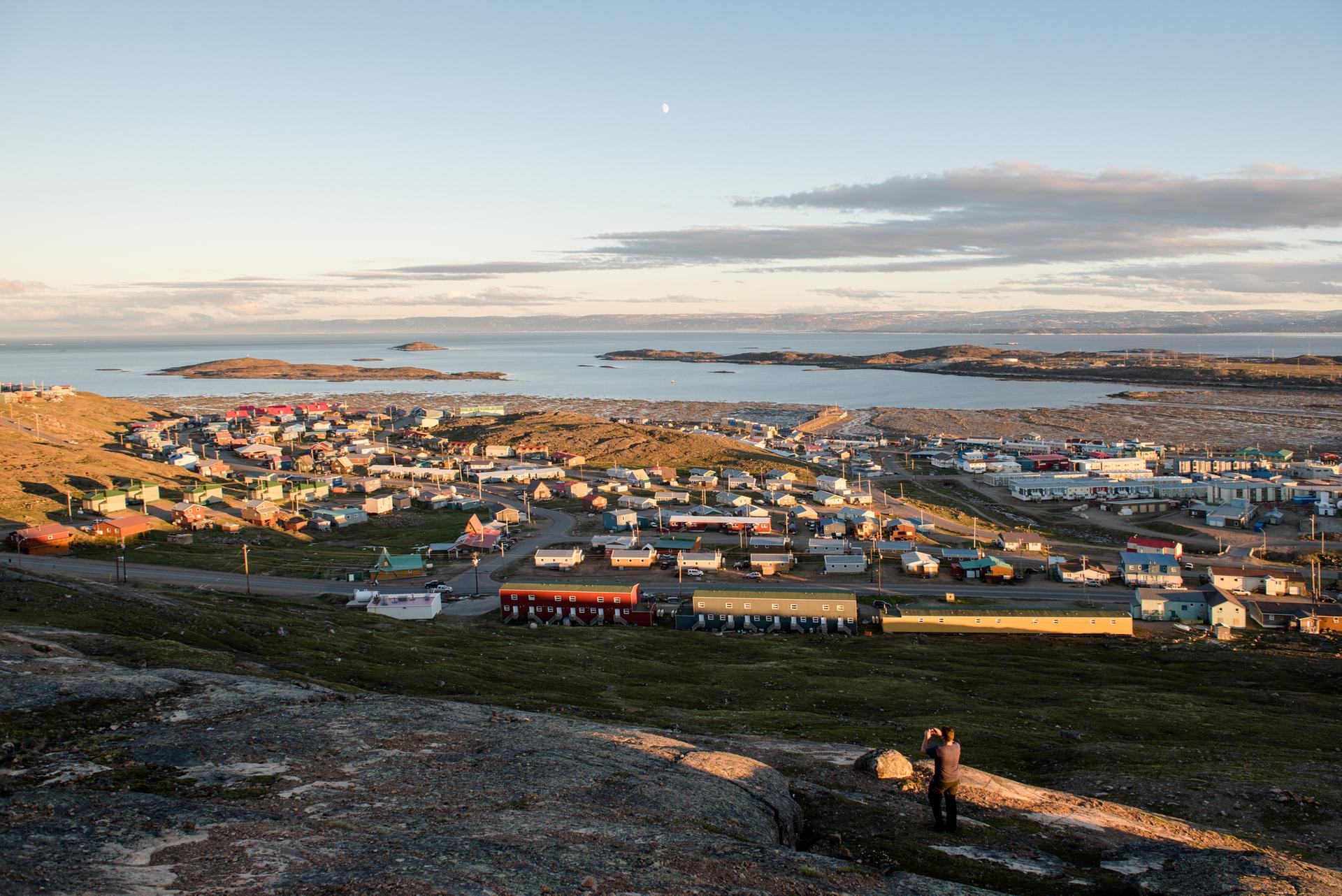Live out your Arctic dreams in Nunavut’s bustling capital city of Iqaluit

A visit to Nunavut’s capital city is not so much what it was as what it has become: A modern frontier city, with plenty for travelers to see and do.
It’s the one place in Nunavut you can eat a shawarma, or you could go classic and get a late-night order of poutine from The Snack. Its Royal Canadian Legion boasts one of the best dance floors north of 60, and the city has lots more to offer in terms of food and drink. If you just want to stay in your hotel with a bottle of wine and watch a movie,you can do that too — but if you’re just visiting, do yourself a favor and explore.
Experiences big and small
Local tourism operators offer a wide range of services, and while summer is wonderful here — hiking and fishing in Sylvia Grinnell Territorial Park on the edge of the city — Iqaluit in wintertime is a snowy paradise.
Beyond aurora viewing and ice fishing (two fantastic options for those new to the North), local outfitters offer dogsledding, snowmobile tours, iglu-building workshops, as well as skiing and snowshoeing excursions in the backcountry. You can very quickly pack in some absolutely iconic Arctic experiences in a short time in the big city, all amidst the dramatic tundra landscape of Baffin Island — and, if you feel you deserve a beer after (and you do), the city’s nightlife has much to offer in food, drink, and local music.
If you’re content to just wander around, the city’s museum and visitors centre are both worth a visit to learn more about Iqaluit and the cultures of Nunavut. You may find art and souvenirs there, but if you’re still looking for something to take home, you could spend time exploring multiple stores that house some of the best in Nunavut fine art — carvings, prints, and clothing made from seal.
Know where you are
There is history in Iqaluit proper, to be sure. A white dome, remnant of the Distant Early Warning (DEW) Line operation that stretched its way across the Arctic during the Cold War to warn of incoming Soviet bombers, is visible from town. The old Hudson’s Bay Company outpost still sits, boarded up, in the suburb of Apex. You can visit these yourself or take a guided tour, offered locally, which will also whisk you around to some must-stops and boutique stores.
The relics of a fascinating era in history of this place, however, sit further away, near the very mouth of Frobisher Bay. While you likely won’t get the chance to visit, it’s worth knowing the story.
Frobisher Bay — the former name of Iqaluit, and the enduring name of the bay in which it sits — is named for the British explorer Martin Frobisher, sent by Queen Elizabeth to explore and claim minerals for her empire starting in 1576. Described in turn as a hero and a pirate, Frobisher was no friend to the Inuit. Throughout his three excursions into the bay, he at first traded, then kidnapped Inuit who were brought overseas to die in a foreign land, then did battle with their kin on land and sea. By 1578, Frobisher returned to England with 1,100 tons of worthless ore and left behind plenty of blood, shed by both sides, in vain.
Three hundred years later, Charles Francis Hall set out to the Arctic in 1861-62 to try to ascertain the fate of Sir John Franklin’s lost expedition. In his travels, he visited Frobisher Bay, and in a tangent to his main journey, made a remarkable historic discovery. The Inuit he met took him to a place called Kodlunarn Island — in today’s Inuktitut, likely Qallunaan or White Man’s Island — near the mouth of the bay. In a testament to the amazing veracity of Inuit oral tradition, his guides were able to recount the comings and goings of Martin Frobisher and his crew from this, their basecamp, in vivid detail, as if it had happened merely the week before.
Common phrases (for the brave)
Don’t be dismayed if you can’t wrap your tongue around these words. Inuit languages are difficult to begin learning. Most people you encounter will know English, but if you do want to try, the North is a welcoming place and you’ll find many people will be happy you’re giving the local language a shot. (Just don’t lose too much sleep trying to figure out the q.)
If someone says tunngasugit (“Welcome,” pronounced toon-ngasoo-geet), you can reply tunngasuppunga (“I feel welcome,” pronounced toon-ngasoop-poonguh).
If someone asks you kinauvit (“What’s your name?” pronounced kee-now-veet), you can respond with your name plus –ujunga (pronounced oo-yoong-uh; for example, John-ujunga means “My name is John.”)
Some absolute basics are ii (pronounced ee) for “yes” and aagga (pronounced uhg-guh) for “no” but raising your eyebrows or crinkling your nose, respectively, helps illustrate the point.
“Thank you” is nakurmiik (pronounced nah-kor-meek, with the stress on the final syllable).